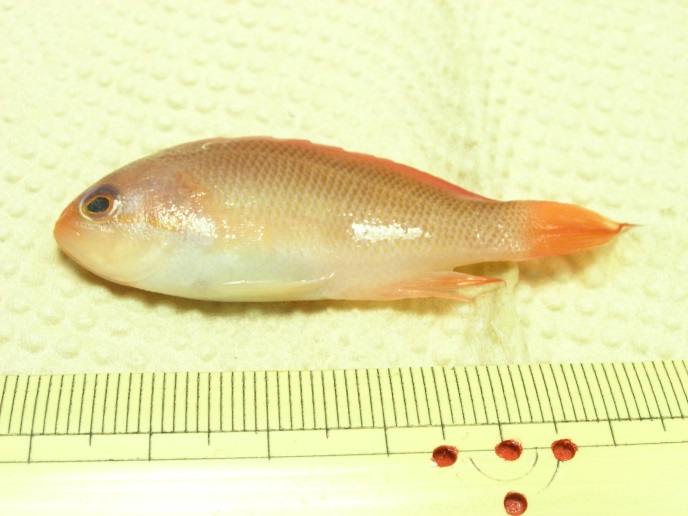marenesian anthias

Perhaps the quintessential "reef fish," anthias make up a sizeable portion of the population of pink, orange and yellow fishes seen swarming in most coral reef photography and film. The anthias are members of the family Serranidae (basses, basslets, groupers) and make up the subfamily Anthiinae.
Anthias are mostly small, peaceful, and beautiful; and are thus quite popular within the ornamental fish trade. They form complex social structures based on the number of males and females and also their position on the reef itself, and are mainly zooplankton feeders. They occur in all tropical oceans and seas of the world. The first species recognized in this group was described in the Mediterranean and northeast Atlantic and was given name Anthias anthias by Carolus Linnaeus in 1758.
Anthias can swarm by the thousands. Anthias do school in these large groups, though they tend toward more intimate subdivisions within the school, appropriately called "harems". These consist of one dominant, colorful male, anywhere from 2-12 females — who have their own hierarchy among them — and up to 2 'subdominant' males, often less brightly colored and non-territorial. Within the swarm of females, territorial males perform acrobatic U-swim displays and vigorously defend an area of the reef and its associated harem.
Anthias are protogynous hermaphrodites. All anthias are born female; if a dominant male perishes, the largest female of the group will often change into a male to take its place. This may lead to squabbling between the next largest male, who sees an opportunity to advance, and the largest female, whose hormones are surging with testosterone. This can turn quite vicious in the limited confines of captivity.
Seven genera of anthias are known to occur in the coral reef ecosystems: Holanthias, Luzonichthys, Nemanthias, Plectranthias, Pseudanthias, Rabaulichthys and Serranocirrhitus. Members of all these genera make it into the aquarium trade, although Pseudanthias is by far the most encountered in the hobby.

